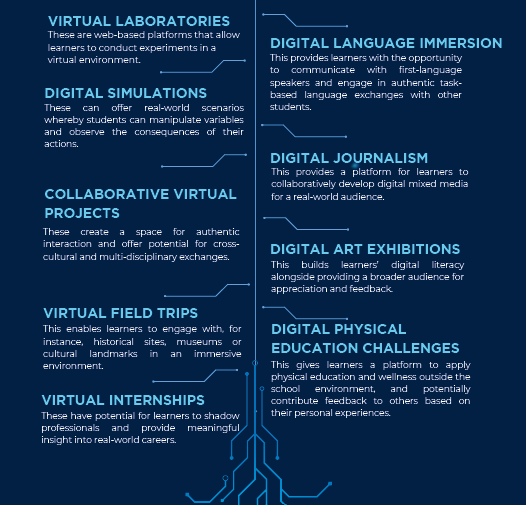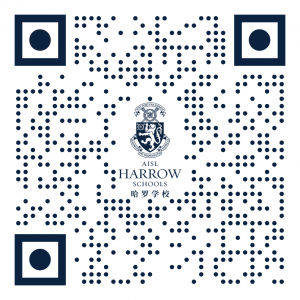The landscape of education is evolving. Shifts are being driven by external factors such as emerging literacies and shifting demands of the workplace, and more internal factors, including learners expectations of learning environments and what cultivates their intrinsic motivation to engage. This positions educators at the forefront of a critical mission: preparing students for academic success in a manner that empowers them to excel both at school and in the challenges that await them beyond the traditional classroom.
The concept of a traditional classroom is in many ways an open question. Prior to the significant wave of digital transformation propelled by developments in technology and external factors such as a pandemic, it may have been easier to imagine what ‘traditional’ looks like in an educational environment. Like our learners themselves, learning environments have evolved and the goal posts are shifting as we create optimal scenarios within which meaningful learning can take place. However, we need to ensure that we are not placing the cart before the horse when it comes to technology: Have the pedagogical approaches we adopt kept up with the pace of digital transformation?
One does not need to reflect too many years to the Massive Open Online Courses (MOOCs) era, whereby swathes of learners gained open access to online learning. Many (not all) of these offerings adopted a transmission mode approach, asking learners to watch a video and then answer a quiz to check comprehension. While valuable at times, the evolution of best-practice prior to this point focused more on social constructivism and a scaffolded approach up Bloom’s Taxonomy of learning from ‘remembering’ to ‘creating’ via ‘application’, ‘analysis’ and ‘evaluation’. While the approach adopted by the initial wave of online offerings may have been strong at fostering receptive skills lower down on Bloom’s Taxonomy, it was not ideal at developing the more productive skills central to competencies like application and creation: the skills necessary to flourish in the ‘real world’.
Perhaps we need to address this challenge by abandoning the collocation of ‘online learning ’ altogether. It seems apt at this stage of digital transformation to refer to technology-enabled or enhanced learning as simply ‘learning’. Learning technology is becoming progressively more invisible in the same way that an overhead projector became invisible; we look at the projection and not at the tool as learners. How, then, do we foster learning experiences which embrace technology in a way that makes it somewhat invisible so that learners can focus on generating meaning in a social and productive manner to foster skills that are relevant and transferrable?
It is hard to argue against the power of learning through doing when grappling with this challenge. Many fields embrace this approach whole-heartedly by adopting pedagogies that require ‘doing’ and ‘reflecting’, such as problem-based learning in Medicine, service learning in Social Work, simulation-based learning in Emergency Services, outdoor education in Environmental Science or studio-based learning in Architecture. At the heart of experiential learning pedagogies is the cycle of having an experience, reflecting on it, making sense of the experience, and then actively experimenting in new situations based on prior learnings.
In a secondary school environment, this cycle has long been implemented in a face-to-face modality through approaches such as workshops, labs, field trips, leadership and team-building activities or community partnerships. When integrating digitally enhanced learning into our environments, however, we need to innovate in order to maintain an experiential approach that goes beyond lower-level outcomes and receptive skills if we endeavour to prepare students for workplace experiences in which technology is ubiquitous. In other words, we need to be careful not to fall unknowingly into the trap of transmission-mode teaching as we integrate technology when we, in fact, may esteem a constructivist, experiential approach.
A few innovations which may move us further towards a meaningfully experiential learning environment, facilitated by technology, are:

The above examples are merely indicative of how technology can encourage learning through doing. In practice, integrating several of the above approaches may be most optimal. For instance, a virtual internship could involve language immersion, digital simulations, virtual field trips and collaborative virtual projects.
The way in which online tools are curated should, of course, be guided by one’s intended learning outcomes and the needs of individual learners. Through this process, it is essential to consider digital equity and technical competence to ensure that learners are all empowered and that the technology itself remains as invisible as possible so that students can focus on germane processing rather than grappling with tools. This, therefore, is likely to require pre-training before learners launch into the main learning experience.
It is clear that the traditional classroom is now a much more fluid concept as it adapts to digital transformation and evolving learner needs and preferences. The critical question that arises out of this is whether our pedagogical approaches have kept pace with this digital revolution. Reflecting on the MOOC era, it is evident that the focus on transmission-mode teaching fell short in fostering the skills necessary for real-world success.
Moving forward, it’s imperative to abandon the distinction between “online” and “traditional” learning, recognising that technology is an imperative part of the modern learning landscape. To truly harness its potential, we need to consider whether the way in which learners engage with technology mirrors that of the real-world. Seamlessly integrating experiential learning approaches which have long thrived in face-to-face modalities may lie at the heart of this challenge.





